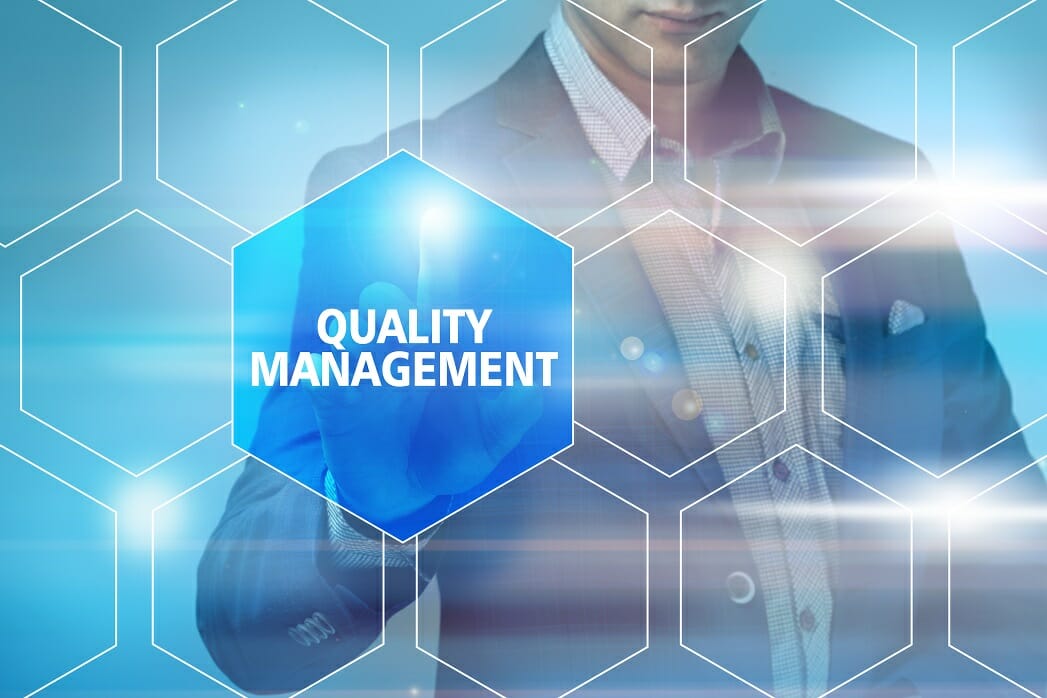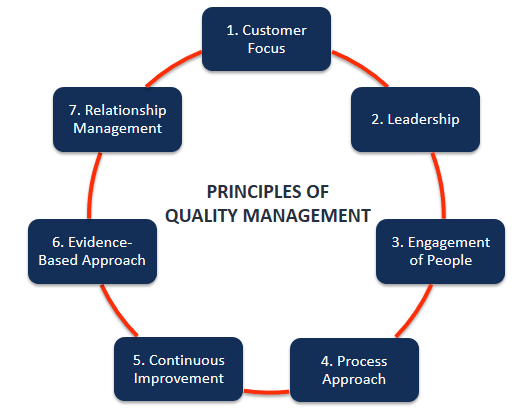Quality Management Solutions Inc Muskegon Mi
What is Quality Management?
Quality management is the act of overseeing different activities and tasks within an organization Corporate Structure Corporate structure refers to the organization of different departments or business units within a company. Depending on a company's goals and the industry to ensure that products and services offered, as well as the means used to provide them, are consistent. It helps to achieve and maintain a desired level of quality within the organization.

Quality management consists of four key components, which include the following:
- Quality Planning – The process of identifying the quality standards relevant to the project and deciding how to meet them.
- Quality Improvement – The purposeful change of a process to improve the confidence or reliability of the outcome.
- Quality Control – The continuing effort to uphold a process's integrity and reliability in achieving an outcome.
- Quality Assurance – The systematic or planned actions necessary to offer sufficient reliability so that a particular service or product will meet the specified requirements.
The aim of quality management is to ensure that all the organization's stakeholders Stakeholder vs. Shareholder The terms "stakeholder" and "shareholder" are often used interchangeably in the business environment. Looking closely at the meanings of stakeholder vs shareholder, there are key differences in usage. Generally, a shareholder is a stakeholder of the company while a stakeholder is not necessarily a shareholder. work together to improve the company's processes, products, services, and culture to achieve the long-term success that stems from customer satisfaction.
The process of quality management involves a collection of guidelines that are developed by a team to ensure that the products and services that they produce are of the right standards or fit for a specified purpose.
- The process starts when the organization sets quality targets to be met and which are agreed upon with the customer.
- The organization then defines how the targets will be measured. It takes the actions that are required to measure quality. It then identifies any quality issues that arise and initiates improvements.
- The final step involves reporting the overall level of the quality achieved.
The process ensures that the products and services produced by the team match the customers' expectations.
Quality Improvement Methods
Quality improvement methods comprise three components: product improvement, process improvement, and people-based improvement. There are numerous methods of quality management and techniques that can be utilized. They include Kaizen, Zero Defect Programs, Six Sigma, Quality Circle, Taguchi Methods, the Toyota Production System, Kansei Engineering, TRIZ, BPR, OQRM, ISO, and Top Down & Bottom Up approaches among others.
Quality Management – Example
A model example of great quality management is the implementation of the Kanban system by Toyota Corporation. Kanban is an inventory control system that was developed by Taiichi Ohno to create visibility for both the suppliers and buyers to help limit the upsurge of excess inventory Inventory Inventory is a current asset account found on the balance sheet, consisting of all raw materials, work-in-progress, and finished goods that a on the production line at any given point in time. Toyota used the concept to execute its Just-in-Time (JIT) system, which helps align raw material orders from suppliers directly with the production schedules. Toyota's assembly line increased efficiency aa the company received just enough inventories on hand to meet customer orders as they were being generated.
Principles of Quality Management
There are several principles of quality management that the International Standard for Quality Management adopts. These principles are used by top management to guide an organization's processes towards improved performance. They include:
1. Customer Focus
The primary focus of any organization should be to meet and exceed the customers' expectations and needs. When an organization can understand the customers' current and future needs and cater to them, that results in customer loyalty, which in turn increases revenue. The business is also able to identify new customer opportunities and satisfy them. When business processes are more efficient, quality is higher and more customers can be satisfied.
2. Leadership
Good leadership Leadership Traits Leadership traits refer to personal qualities that define effective leaders. Leadership refers to the ability of an individual or an organization to guide individuals, teams, or organizations toward the fulfillment of goals and objectives. Leadership plays an important function in management results in an organization's success. Great leadership establishes unity and purpose among the workforce and shareholders. Creating a thriving company culture provides an internal environment that allows employees to fully realize their potential and get actively involved in achieving company objectives. Leaders should involve the employees in setting clear organizational goals and objectives. This motivates employees, who may significantly improve their productivity and loyalty.
3. Engagement of People
Staff involvement is another fundamental principle. The management engages staff in creating and delivering value whether they are full-time, part-time, outsourced, or in-house. An organization should encourage the employees to constantly improve their skills and maintain consistency. This principle also involves empowering the employees, involving them in decision making and recognizing their achievements. When people are valued, they work to their best potential because it boosts their confidence and motivation. When employees are wholly involved, it makes them feel empowered and accountable for their actions.
4. Process Approach
The performance of an organization is crucial according to the process approach principle. The approach principle emphasizes achieving efficiency and effectiveness in the organizational processes. The approach entails an understanding that good processes result in improved consistency, quicker activities, reduced costs, waste removal, and continuous improvement. An organization is enhanced when leaders can manage and control the inputs and the outputs of an organization, as well as the processes used to produce the outputs.
5. Continuous Improvement
Every organization should come up with an objective to be actively involved in continuous improvement. Businesses that improve continually experience improved performance, organizational flexibility, and increased ability to embrace new opportunities. Businesses should be able to create new processes continually and adapt to new market situations.
6. Evidence-based Decision Making
Businesses should adopt a factual approach to decision-making. Businesses that make decisions based on verified and analyzed data have an improved understanding of the marketplace. They are able to perform tasks that produce desired results and justify their past decisions. Factual decision making is vital to help understand the cause-and-effect relationships of different things and explain potential unintended results and consequences.
7. Relationship Management
Relationship management is about creating mutually beneficial relations with suppliers and retailers. Different interested parties can impact a company's performance. The organization should manage the supply chain process well and promote the relationship between the organization and its suppliers to optimize their impact on the company's performance. When an organization manages its relationship with interested parties well, it is more likely to achieve sustained business collaboration and success.

Benefits of Quality Management
- It helps an organization achieve greater consistency in tasks and activities that are involved in the production of products and services.
- It increases efficiency in processes, reduces wastage, and improves the use of time and other resources.
- It helps improve customer satisfaction.
- It enables businesses to market their business effectively and exploit new markets.
- It makes it easier for businesses to integrate new employees, and thus helps businesses manage growth more seamlessly.
- It enables a business to continuously improve their products, processes, and systems.
Bottom Line
Quality management in businesses is vital to ensure consistency in its processes, as well as in its products and services. In business, customer satisfaction is key. As a customer's main concern is the quality of the products or services they purchase, the supplier's main goal should always be to ensure that what they produce is of consistent and fine quality.
Related Readings
CFI is the official provider of theFinancial Modeling & Valuation Analyst (FMVA)™ Become a Certified Financial Modeling & Valuation Analyst (FMVA)® CFI's Financial Modeling and Valuation Analyst (FMVA)® certification will help you gain the confidence you need in your finance career. Enroll today! certification program for those looking to take their careers to the next level. To learn more and expand your career, check out the additional CFI resources below:
- 5 P's of Marketing 5 P's of Marketing The 5 P's of Marketing – Product, Price, Promotion, Place, and People – are key marketing elements used to position a business strategically. The 5 P's of
- Brand Equity Brand Equity In marketing, brand equity refers to the value of a brand and is determined by the consumer's perception of the brand. Brand equity can be positive or
- Homogenous Cost Pool Homogeneous Cost Pool A homogeneous cost pool is essentially an accounting term used by the management of a company to group together costs that show a similar cause and effect, or benefits received, relationship in terms of the allocation base of costs. In short, homogeneous cost pools are a way of logically grouping together related
- Walmart Marketing Mix Walmart Marketing Mix Walmart is a powerhouse of a business, and one of its key strengths is its marketing mix. Surviving in the retail market requires more than just luck
Quality Management Solutions Inc Muskegon Mi
Source: https://corporatefinanceinstitute.com/resources/knowledge/strategy/quality-management/